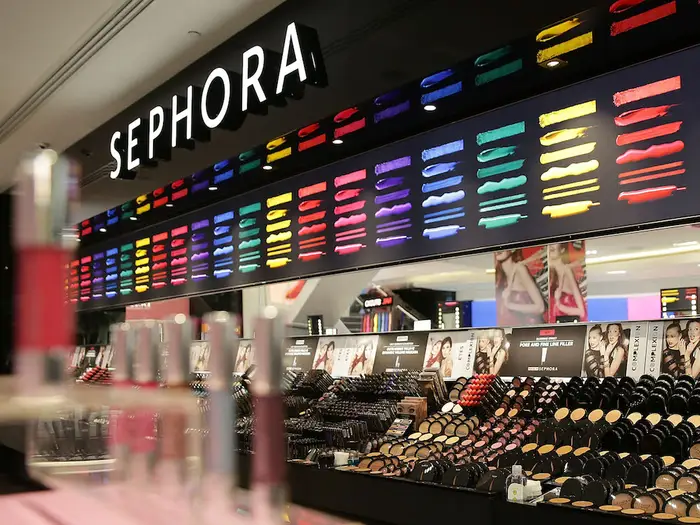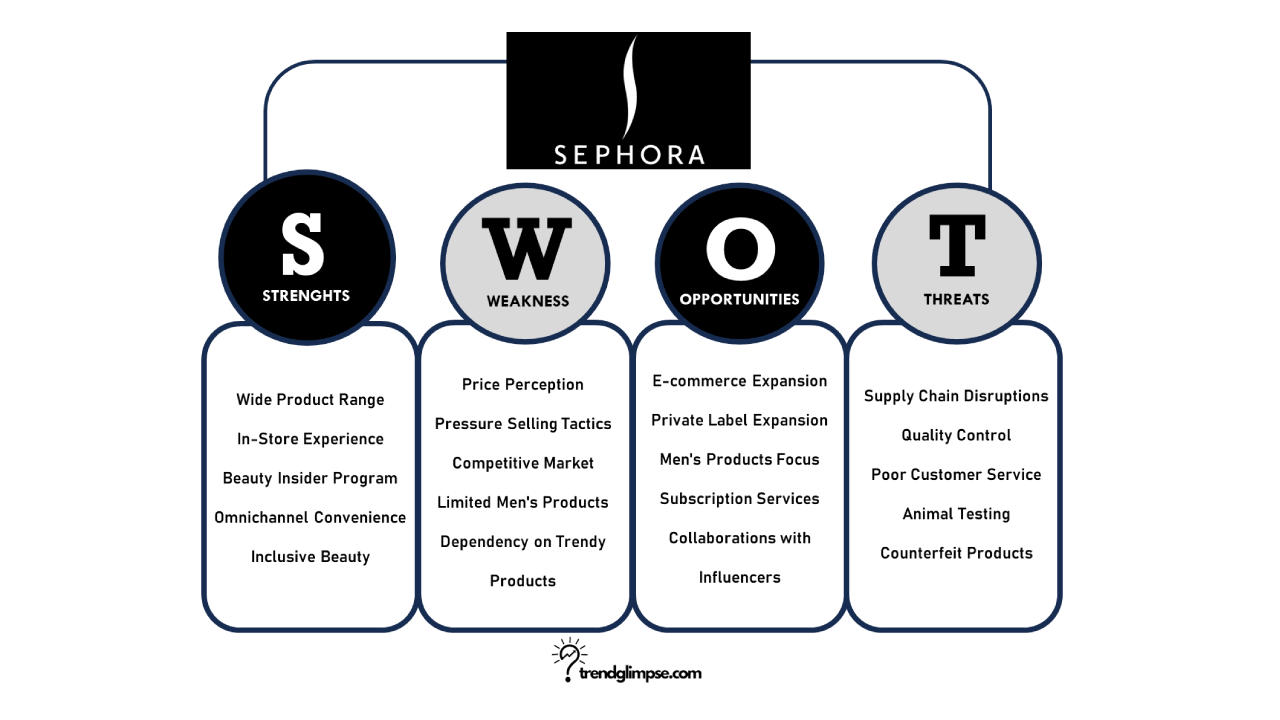An Overview of Sephora
Sephora has become a go-to destination for beauty lovers looking for the hottest and hardest-to-find makeup, skincare, haircare, and fragrance products. Walk into any Sephora location or log onto Sephora.com and one is guaranteed to discover new brands and cult favorites from around the world for all beauty tastes and budgets.
This leading specialty beauty retailer first originated in France in 1970 and expanded to North America in 1998. Now with over 490 stores across the Americas, not to mention a robust e-commerce site, Sephora has solidified itself as the most authoritative beauty retailer.
Shoppers continually flock to Sephora to get their hands on products before anyone else thanks to its impressive rotating cast of new launches. In fact, over 100 new products launch at Sephora every month! Those eager to play with glittering eyeshadow palettes, creamy lipsticks, or the latest skincare wonder can get first dibs by becoming a Beauty Insider member. With three tiers of membership levels including Insider, VIB, and Rouge, Beauty Insiders gain perks like free samples and early access to sales. Currently, there are over 25 million Beauty Insider members in the Americas demonstrating the brands’ popularity.
Now let’s take a closer look at Sephora’s strengths, weaknesses, opportunities, and threats in this retail SWOT analysis of the prominent beauty marketplace.
Strengths of Sephora
Wide Product Range
With over 300 carefully curated brands, Sephora offers an exceptionally diverse lineup of prestige beauty products. Their extensive selection allows you to find everything from classic staples to cutting-edge, highly specialized items conveniently under one roof. Whether you’re looking to experiment with a new look or restock favorites, their product range has you covered.
In-Store Experience
Stepping into a Sephora store, clients are greeted by a clean, sleek environment with readily-accessible testers for essentially any product on the sales floor. Trained beauty advisors provide tailored product recommendations and application tips that make finding new items rewarding rather than overwhelming. The welcoming experience keeps clients returning.
Beauty Insider Program
Signing up for Sephora’s free Beauty Insider program awards members meaningful perks like birthday gifts, free samples, early access to sales, and greater redemption opportunities. Building points toward higher tiers leads to bigger rewards, motivating loyal return customers. It’s an industry-leading loyalty program keeping beauty enthusiasts engaged.
Omnichannel Convenience
Sephora customers enjoy seamless integration between in-store and online shopping. Scan products in-store to read reviews and redeem offers online, or use virtual try-on tech to test products digitally before purchasing in-person. Order online and pick up in store, or have products shipped directly. The linked experience bridges old and new shopping habits.
Inclusive Beauty Standards
Unlike more traditional beauty retailers skewed toward a narrow beauty standard, Sephora celebrates diversity and self-expression. Their product range and model representation promote inclusivity across skin tones, gender identities, ages and abilities. Beauty tips educate clients on customizing products or looks to be uniquely themselves. Sephora embraces and empowers all shoppers.
Weakness of Sephora
Price Perception
Sephora has developed a reputation for being on the pricier side. Many consumers perceive the typical price points for cosmetics and skincare at Sephora to exceed what they are comfortable spending or view as reasonable value. This can turn away potential customers, especially more budget-conscious shoppers not interested in splurging. Sephora could analyze price sensitivity and expand offerings at multiple tiers.
Pressure Selling Tactics
Sales associates at Sephora stores often aggressively push certain products, brands, or bundles that likely come with higher commissions. This pressure selling approach frequently alienates customers who feel manipulated or overwhelmed. Sephora should better train staff on subtle consultative engagement focused on customer needs rather than quotas or individual gain.
Competitive Market
The beauty retailer landscape grows increasingly crowded with new players and brands launching direct-to-consumer options. Upstarts like Glossier and The Ordinary have resonated for their concentration on specific product domains at affordable price points. Sephora must differentiate and specialize while also emphasizing omnichannel convenience to retain market share.
Limited Focus on Men’s Products
Only around 10% of Sephora’s offerings target male consumers despite growing interest in men’s grooming and skincare. By predominantly catering to women, Sephora overlooks revenue potential from better serving male shoppers. Carving out men’s sections in stores and online could make the retailer more welcoming to this demographic.
Dependency on Trendy Products
Sephora banks on the latest viral and Instagram-worthy items which can cause volatile sales as trends rapidly change. To sustain success, Sephora should balance chasing fads with building up their portfolio of classic staples less susceptible to dying popularity. Cultivating steadier collection of products with long-term potential would stabilize the business.

Opportunities of Sephora
E-commerce Expansion
As more consumers shift to online shopping, Sephora has major opportunities to grow through e-commerce. By enhancing their mobile app and website functionalities, focusing on speed and convenience, expanding delivery options, and personalizing recommendations, Sephora can increase digital market share. Investing in seamless omnichannel retail should be a priority.
Private Label Expansion
Sephora has seen great success with its in-house cosmetics brands like Sephora Collection. Expanding its owned brands allows Sephora to offer unique products with higher margins. Potential growth areas include skin care, hair care, and clean/natural lines where there is rising demand. Focusing innovation on owned brands also builds loyalty.
Men’s Beauty Products Focus
The men’s grooming market is rapidly growing but still nascent. Sephora is well-positioned to be a category leader by expanding offerings targeted towards men. Curating kits for skin care, beard care, fragrance and more can capture wallet share. In-store merchandising and digital content also need to evolve to better cater to male consumers and their behaviors.
Subscription Services
Beauty subscription boxes represent fast growth, allowing direct consumer relationships. Sephora can bolster subscriptions like Play! By Sephora while adding tiers focused on skin care, makeup, natural products or fragrance. Customization by style, frequency and price helps attract and retain subscribers. This locks in consistent repeat purchase.
Collaborations with Influencers & Beauty Experts
Strategic collaborations with top beauty YouTubers, Instagrammers and experts leverage their follower bases and provides built-in marketing. Co-created product lines allow fresh innovations while driving influencer traffic to Sephora stores and site. The key is developing authentic connections between brands, influencers and consumers.
Threats of Sephora
Supply Chain Disruptions
Sephora has faced some hiccups in their supply chain recently, with shortages of certain beloved brand products. This seems to stem from COVID-related production and transportation delays. I’d advise checking item availability online before visiting stores right now. With hope, these issues should resolve in coming months as operations normalize.
Accusations of Quality Control
Lately some shoppers have complained about apparent quality control problems with some Sephora collection items, like makeup arriving broken or skincare appearing altered. Sephora should respond to these quickly and seriously to retain trust in their products. Perhaps they could improve inspection protocols or switch manufacturers if needed.
Reports of Poor Customer Service
Some concerning reports show Sephora struggling with customer service staffing shortages right now, leading to long waits or rushed service in stores. As a loyal brand shopper myself, I hope they will invest in more staff training and support to re-strengthen service. This personal touch is part of what draws us to Sephora over online buying.
Accusations of Animal Testing
Animal rights groups have questioned if Sephora still allows certain suppliers to conduct animal testing. As a leader in cruelty-free beauty, Sephora should clarify their policies here and enforce compliance from all brands they carry. Transparency and committed action against testing would satisfy most ethically-minded shoppers.
Counterfeit Products
Like most prominent brands, Sephora faces occasional issues with counterfeit versions of their products popping up online or even in some stores. They could consider technologies like microtags in packaging to help shoppers authenticate items. Strict legal action against counterfeiters may also deter the practice spreading further.
Closing Thoughts
In conclusion, Sephora remains in a strong competitive position in the beauty and cosmetics retail industry. However, the Sephora SWOT analysis highlights some vulnerabilities and threats worth addressing. Competition is increasing from both online retailers and other brick-and-mortar chains investing in the in-store experience. Additionally, economic conditions pose challenges if consumer discretionary spending declines.
In terms of growth strategies moving forward, Sephora would benefit from focusing on its strengths in brand assortment and customer service. Continuing to secure exclusive distribution rights for popular brands can help drive foot traffic. Additionally, Sephora could consider expanding its in-store services like makeovers and beauty classes as a way to elevate the customer experience.
Investing in omnichannel integration will also be key. Enhancing Sephora’s mobile app features and improving synergy between in-store and online shopping should be priorities. Personalization and customized product recommendations would help achieve this.
If Sephora can capitalize on these avenues for strategic growth while addressing weaknesses around supply chain efficiency and technology, it stands to maintain its industry edge. Beauty and cosmetics remain categories with room for growth, and Sephora has built a strong brand. While increasing competition and potential economic slowdowns require diligence, Sephora remains well-positioned to adapt and retain its status as a top global beauty retailer in the years ahead.

I have always been fascinated by the inner workings of companies and industries. So I decided to study business to explore it more. My goal is to take all my research and turn it into cool stories that give people a better understanding of the business world.

